
Friedrich Ernst Martin Wield (15 March 1880, Hamburg - 10 June 1940, Hamburg) was a German sculptor.

Friedrich Ernst Martin Wield (15 March 1880, Hamburg - 10 June 1940, Hamburg) was a German sculptor.

He was the second son born to Christian Wield, a Master carpenter, and his wife, Johanna née Deest. In 1896, after attending the Kunstgewerbeschule, he served an apprenticeship with the sculptor, Walter Zehle (1865-1940). [1] In 1900, following a study trip to Paris, he began working with Wilhelm von Rümann at the Academy of Fine Arts, Munich. He would stay there for three years. [2]
He returned to Paris in 1905, and opened a studio on the Rue Vercingétorix . While there, he made the acquaintance of Auguste Rodin. In 1908, he took an extended trip to Italy. The following year, he had an exhibition at the Société Nationale des Beaux-Arts. At the beginning of World War I, he found it necessary to leave France, and went to Winterthur, where he stayed with Arthur Hahnloser , a noted art collector. After being deferred from active military service in Germany, for health reasons, he returned to Hamburg, and worked in a reserve unit there from 1915 to 1918.
In 1919, he was one of the founding members of the Hamburg Secession , and served as its chairman until 1922. At that time, he left the Secession to join the Deutscher Künstlerbund and the Hamburgische Künstlerschaft . He completed several major commissions, including a memorial for the war dead in Bergedorf Cemetery .
In the early 1930s, he received a commission from the Nordische Rundfunk AG , that area's first broadcasting company, for a monument to the physicist, Heinrich Hertz. When the Nazis came to power, they cancelled the commission, due to Hertz's Jewish ancestry, and refused to pay Wield for the work he had already done. From that point on, he would experience increasingly serious financial difficulties.
Due to the restrictions on his creative freedom that had reduced him to poverty, he committed suicide in 1940. [3] He was buried at the Ohlsdorf Cemetery. His grave was adorned with a "Crucifixion" he had created in 1938. [4]
In 1994, thanks to efforts by the art dealer, Boris Kegel-Konietzko , his unfinished monument to Hertz was completed, from the original sketches and molds, by the sculptor Manfred Sihle-Wissel . Since 2016, it has been on display at the headquarters of the Norddeutscher Rundfunk [5]

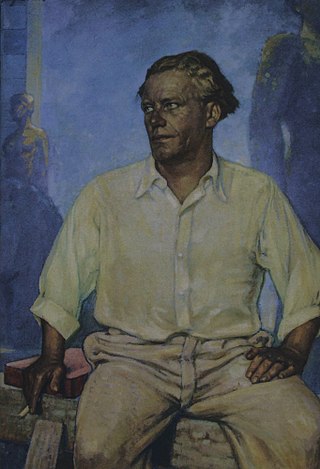
Josef Thorak was an Austrian-German sculptor. He became known for oversize monumental sculptures, particularly of male figures, and was one of the most prominent sculptors of the Third Reich.

The Hagenbund or Künstlerbund Hagen was a group of Austrian artists that formed in 1899. The group's name derived from the name Herr Hagen, the proprietor of an inn in Vienna which they frequented.
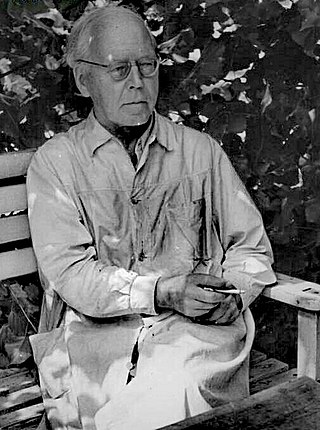
Georg Kolbe was a German sculptor. He was the leading German figure sculptor of his generation, in a vigorous, modern, simplified classical style similar to Aristide Maillol of France.
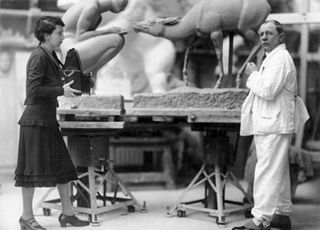
Professor Hugo Lederer was an Austro-Hungarian-born German sculptor.

The Bismarck Monument in Hamburg is a memorial sculpture located in the St. Pauli quarter dedicated to Otto von Bismarck. It is one of 240 memorials to Bismarck worldwide and is the largest and probably best-known of these Bismarck towers. The monument stands near the jetties of Hamburg port on the Elbhöhe, today a local recreation area. The architect was Johann Emil Schaudt; the sculptor was Hugo Lederer.

The Prussian Academy of Arts was a state arts academy first established in Berlin, Brandenburg, in 1694/1696 by prince-elector Frederick III, in personal union Duke Frederick I of Prussia, and later king in Prussia.
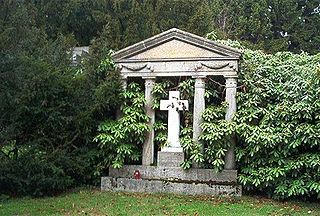
Ohlsdorf Cemetery in the Ohlsdorf quarter of the city of Hamburg, Germany, is the biggest rural cemetery in the world and the fourth-largest cemetery in the world. Most of the people buried at the cemetery are civilians, but there is also a large number of victims of war from various nations. The cemetery notably includes the Old Hamburg Memorial Cemetery with the graves of many notable Hamburg citizens.

Will Lammert was a German sculptor. In 1959 he was posthumously awarded the National Prize of the German Democratic Republic.
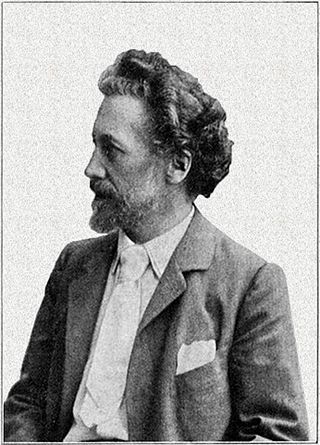
Edmund Ritter von Hellmer, born Edmund Hellmer and ennobled in 1912, was an Austrian sculptor who worked in the styles of Historicism and Art Nouveau.

Adolf Brütt was a German sculptor. He was the founder of the Weimarer Bildhauerschule and its accompanying bronze foundry.
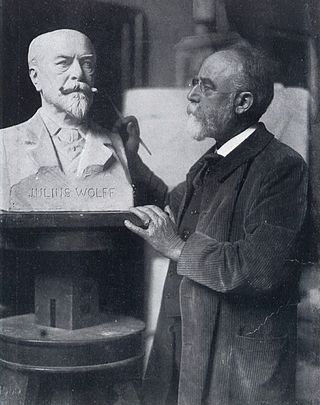
Fritz (Friedrich) Schaper was a German sculptor.

Reinhold Carl Thusmann Felderhoff was a German sculptor and medallist.

August Friedrich Johann Kraus was a German sculptor.

Martin Wolff was a German sculptor.

Heinrich Nauen was a German Expressionist artist. He created oils, watercolors, and prints; as well as murals and mosaics. A large part of his output consists of landscapes and floral still-lifes.
Günther Grundmann was a German art historian, museum curator and monument preservator.

Große Berliner Kunstausstellung , abbreviated GroBeKa or GBK, was an annual art exhibition that existed from 1893 to 1969 with intermittent breaks. In 1917 and 1918, during World War I, it was not held in Berlin but in Düsseldorf. In 1919 and 1920, it operated under the name Kunstausstellung Berlin. From 1970 to 1995, the Freie Berliner Kunstausstellung was held annually in its place.
August Bauer was a German sculptor.
Willi Hoselmann was a German sculptor.

The Stahnsdorf South-Western Cemetery is a Protestant rural cemetery in Germany. Established in 1909, the cemetery is located in the municipality of Stahnsdorf in Potsdam-Mittelmark district, Berlin/Brandenburg Metropolitan Region. With a land area of approximately 206 ha, it is the largest church-owned Christian cemetery in Germany, as well as being the tenth largest cemetery in the world and Germany's second largest cemetery after Hamburg's Ohlsdorf Cemetery. The cemetery is operated by the administration of the Berlin City Protestant Synod Association. Due to its status as one of the most important landscape parks in the Berlin metropolitan area, along with the large amount of historically valuable tombs and other buildings which include the landmark wooden chapel, the cemetery was designated as a place of special importance and a protected area by the state of Brandenburg in 1982.